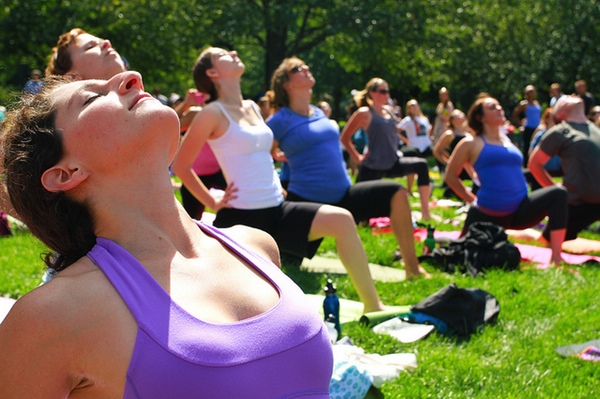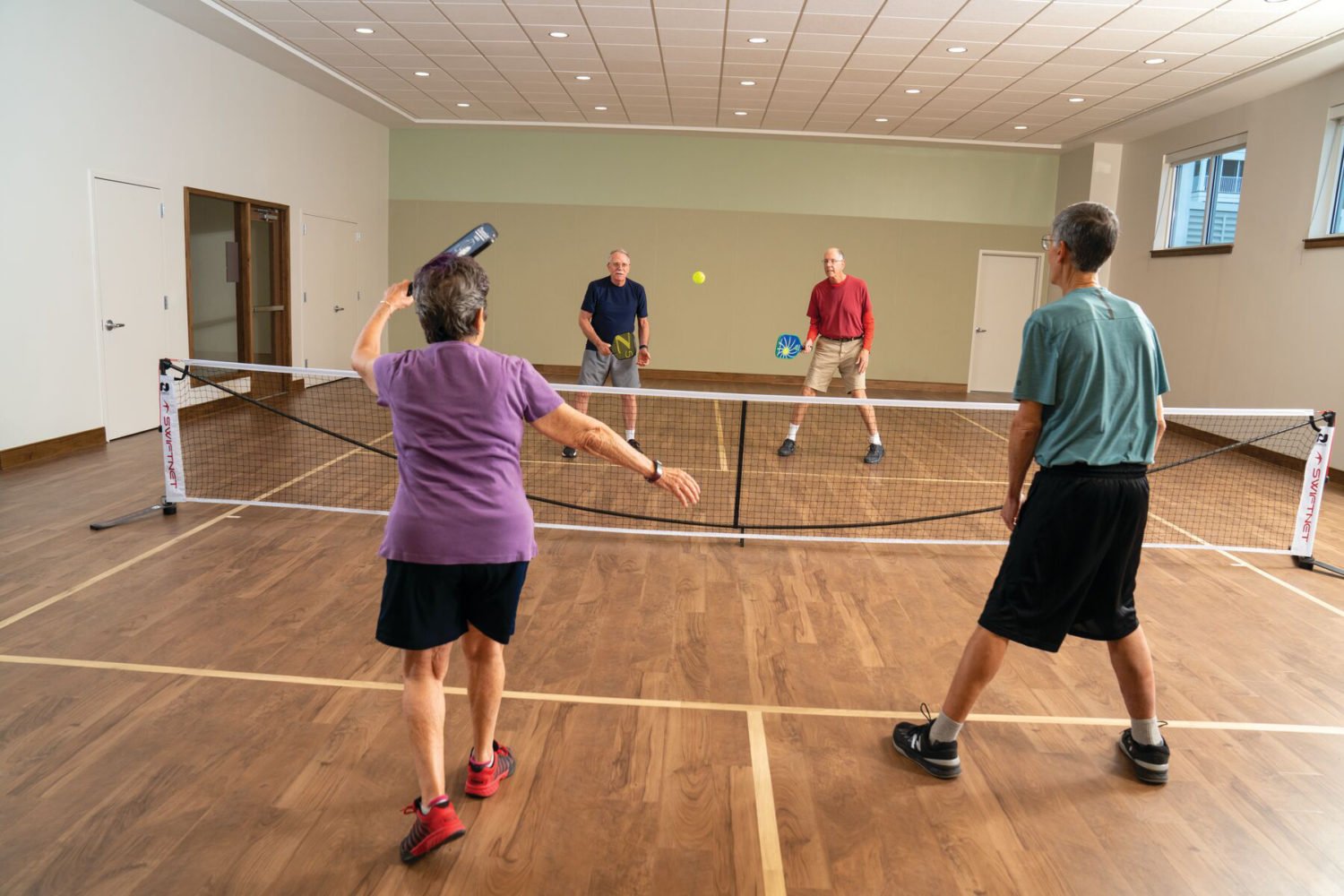A new study suggests that exercise that require deep breathing, like yoga, can improve asthmatics’ quality of life. Photograph courtesy of Flickr user lululemon athletica.
Physical exercise has long been cited as a common trigger for asthma attacks, along with allergens, stress, and other irritants. For that reason, plenty of asthmatics tend to avoid working out, for fear of worsening their symptoms of wheezing, coughing, or tightness of the chest. But a new study presented at this past weekend’s annual meeting of the American Academy of Allergy, Asthma, and Immunology suggests that exercise can actually improve breathing and quality of life for asthmatics.
Researchers divided patients with persistent asthma into two groups. The first group performed 35 minutes of aerobic exercise and 10 minutes of thoracic and upper-body Pilates three times a week. The second group served as the control and was only provided information about exercise. All participants filled out a quality of life questionnaire every month.
Four months after the structured exercise, 78 percent of the adults in the exercise group reported an improvement in quality of life, compared with 39.5 percent of the control group. Forty-one percent of adults in the exercise group also said they experienced fewer disease-related limitations, while half reported being in a better emotional state.
Although the results may be surprising for asthmatics who had sworn off exercise, the benefits of exercise are actually well known. Dr. Jeff Hales, chief of pulmonary, critical care, and sleep division at Virginia Hospital Center, says there’s plenty of proof that deep breathing techniques have been shown to open up small airways.
“By taking full, deep breaths as you run, you’re exercising muscles of respiration, those found in the diaphragm,” he explained at Saturday’s EnduraHealth Summit at the hospital center.
When one athlete with severe asthma said her symptoms had drastically improved since competing in triathlons and endurance sports, Hales told her she wasn’t imagining things. Hales, a Washingtonian Top Doctor, has seen his own patients feel better after doing cleansing breathing techniques, whether it’s during runs or yoga.
However, asthmatics should continue to be aware of their environments and temperature if training outside. Hales cites Washington, an area with a high air-pollutant profile. “Whatever you inhale is going to cause inflammation in your lungs,” he says.
That said, asthma is a chronic inflammatory condition, so unfortunately, exercise alone will not cure it. “It does require anti-inflammatory medications to manage and control it,” Hale says. If the asthma is severe enough, it’s a good idea to carry a quick-relief bronchodilator with you on long runs or competitions, Hales advises. One inhale will last for up to four hours.
Gyms should also play a more active role in helping asthmatics while exercising, researchers said in the study. Gym staff members in the study closely monitored asthmatics and made sure nebulizers were close at hand.
Asthmatics can also benefit from warming up well before tackling a workout. “If you can get asthmatics to warm up enough, you can really prevent exercise-induced asthma,” study researcher Dr. Thomas A.E. Platts-Mills told MedPage Today.
For more information on the results, click here.













